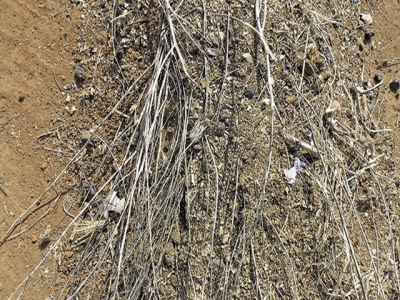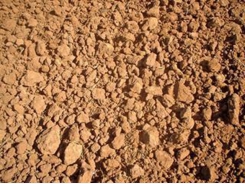The value of bacteria

Each group of organisms living in the soil has a different function and these organisims’ interaction with one another should create a balance that benefits plants.
Unincorporated organic matter and crop residue on the surface will not cause a negative period as all the activity takes place slowly at or near the surface. Photo: Bill Kerr
Bacteria are an important part of the soil ecosystem. They reproduce extremely rapidly – approximately every 30 minutes – and their numbers are usually more than 1 000 times greater in the rhizosphere (the area close to root zone). This is because the plant feeds them through the roots, enabling the bacteria to perform various functions that help the plant.
Bacteria make unavailable minerals available to the plant and produce substances that stimulate plant growth. This is apart from breaking down organic matter. They also break down toxins. In fact, if the same chemicals are used for nematode and weed control on a constant basis, the chemicals become ineffective because the organisms that feed on these products build up and neutralise them much more rapidly.
Bacteria are also a source of food for other organisms that perform different functions. Bacteria have a very narrow carbon:nitrogen (C:N) ratio of 5:1. As they increase in numbers, such as when organic material is incorporated into the soil, they lock up large quantities of nitrogen. For every 1t of bacteria, their bodies contain 200kg N. They lock up other elements as well, but N is by far the largest component.
When bacteria numbers increase to this extent, the deficiencies in the crop growing under these conditions result in a ‘negative period’: the required fertiliser is in the soil but locked up in organisms, causing the plants to suffer. This continues until the undecomposed organic matter is rendered down and the organisms start to die off through lack of food. The process returns N to the soil solution, where the plants start to use it.
Slower breakdown in no-till soil
In no-till soil, the crop residue is left on the soil surface. Here, the breakdown is much slower and a negative period affects only a small portion of the upper profile. If it is a legume, the higher N content in the plant will cause it to be broken down more rapidly and there will enough N to satisfy the soil organisms without using free N in the soil solution.
Non-leguminous crops will in any case benefit from a broadcast application of N to hasten the breakdown and correct the C:N ratio for maximum humus formation, as discussed in an earlier article. Some 10 000 bacteria a day (each with a C:N ratio of 5:1) are consumed by protozoa with a C:N ratio of 10:1. The process excretes a great deal of nitrogen into the soil solution for use by plants and other organisms.
This constant nutrient recycling in a healthy organic soil retains nutrients in the system, with very little leaching occurring. This saves the farmer money and protects the environment from pollutants. In addition, when the nitrogen is converted to the leachable nitrate form, it is retained by humus (assuming there is enough in the soil).
Personal experience
I have experienced this over a four-year period on my lands. With no outside fertiliser inputs, whether organic or chemical, I still had exceptional results from crops requiring high nitrogen inputs, even in prolonged periods of heavy rain. What I did observe was that, at the end of winter, a slight N deficiency would occur on account of microbe dormancy in the cold. It would soon be rectified, however, when the weather warmed up.
Protozoa and bacteria in balance
As the bacterial numbers rise due to the available food source, the substantially larger protozoa also increase until they become too abundant and bacteria become insufficient to sustain them. They then start to die off, giving the bacteria a chance to recover. Protozoa breed more slowly and double in six hours or more. The protozoa are also food for nematodes and earthworms.
Related news
Tools

Phối trộn thức ăn chăn nuôi

Pha dung dịch thủy canh

Định mức cho tôm ăn

Phối trộn phân bón NPK

Xác định tỷ lệ tôm sống

Chuyển đổi đơn vị phân bón

Xác định công suất sục khí

Chuyển đổi đơn vị tôm

Tính diện tích nhà kính

Tính thể tích ao



 The role of earthworms in boosting soil quality
The role of earthworms in boosting soil quality  Fungi and bacteria: the balancing act
Fungi and bacteria: the balancing act